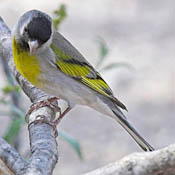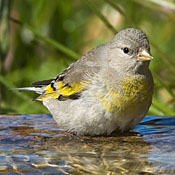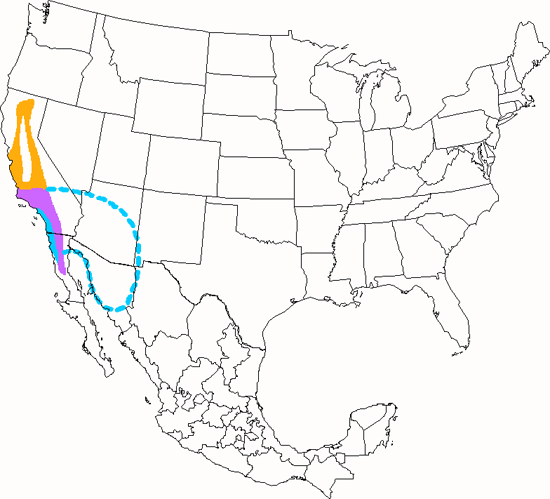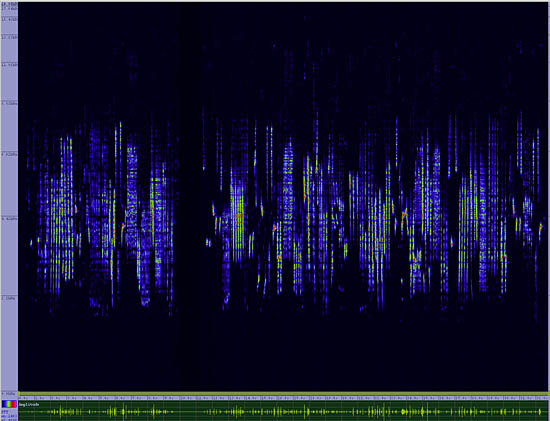Lawrence's Goldfinch
Spinus lawrencei

Perching

Length: 5 in. (12 cm )
Typically found in oak and streamside vegetation, this goldfinch is highly nomadic and can be found in a wide variety of lowland habitats. Apparently annual differences in rainfall can contribute to wide winter invasions and nesting well outside its normal range. Its food consists of a range of grass and shrub seeds and during nesting, a few insects. The nest is a small cup-shaped affair made of grass, flowers and hair. It is placed in a low shrub, often in loose association with other nests of Lawrence\s Goldfinches.'
The four-digit banding code is LAGO.
Bibliographic details:
- Article: Lawrence's Goldfinch
- Author(s): Dr. Biology
- Publisher: Arizona State University School of Life Sciences Ask A Biologist
- Site name: ASU - Ask A Biologist
- Date published:
- Date accessed: 4 December, 2025
- Link: https://askabiologist.asu.edu/activities/bird/lawrences-goldfinch
APA Style
Dr. Biology. (). Lawrence's Goldfinch. ASU - Ask A Biologist. Retrieved from https://askabiologist.asu.edu/activities/bird/lawrences-goldfinch
Chicago Manual of Style
Dr. Biology. "Lawrence's Goldfinch". ASU - Ask A Biologist. . https://askabiologist.asu.edu/activities/bird/lawrences-goldfinch
MLA 2017 Style
Dr. Biology. "Lawrence's Goldfinch". ASU - Ask A Biologist. . ASU - Ask A Biologist, Web. https://askabiologist.asu.edu/activities/bird/lawrences-goldfinch
Be Part of
Ask A Biologist
By volunteering, or simply sending us feedback on the site. Scientists, teachers, writers, illustrators, and translators are all important to the program. If you are interested in helping with the website we have a Volunteers page to get the process started.











